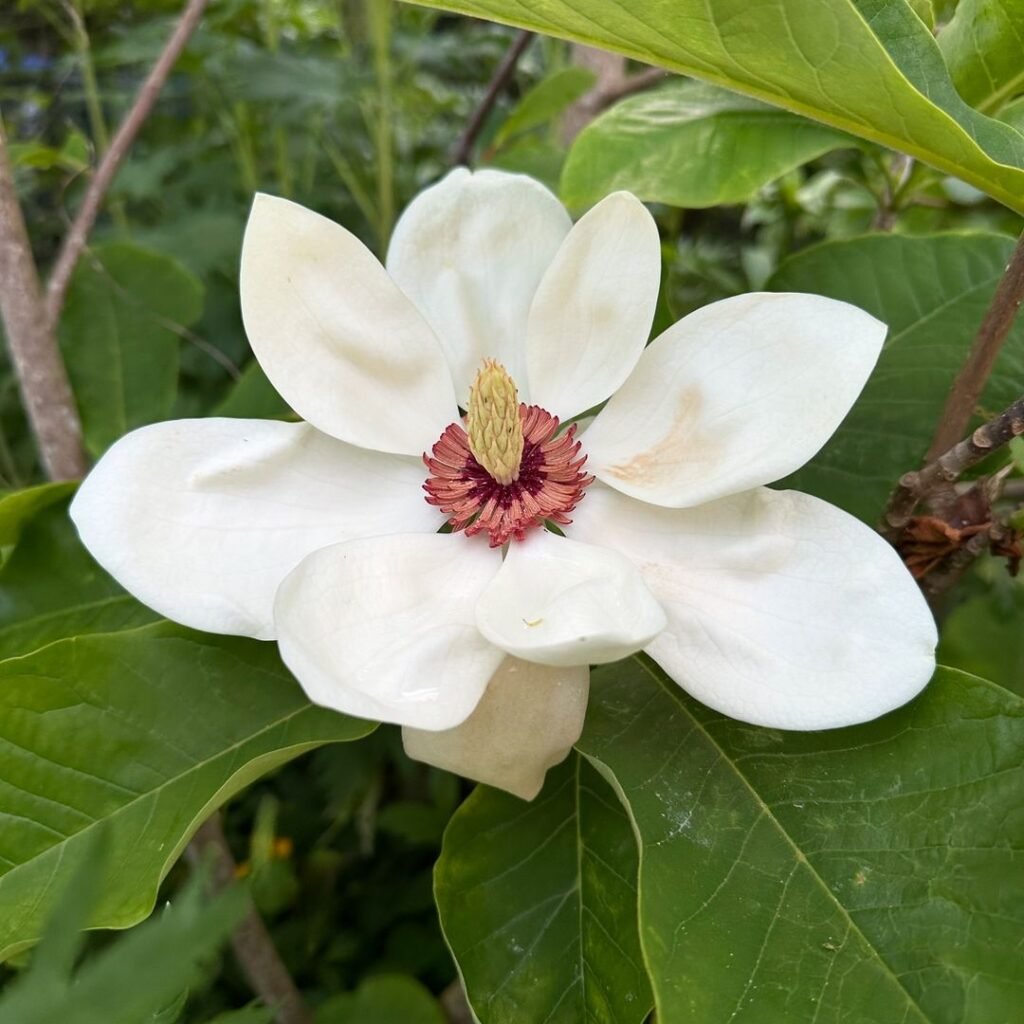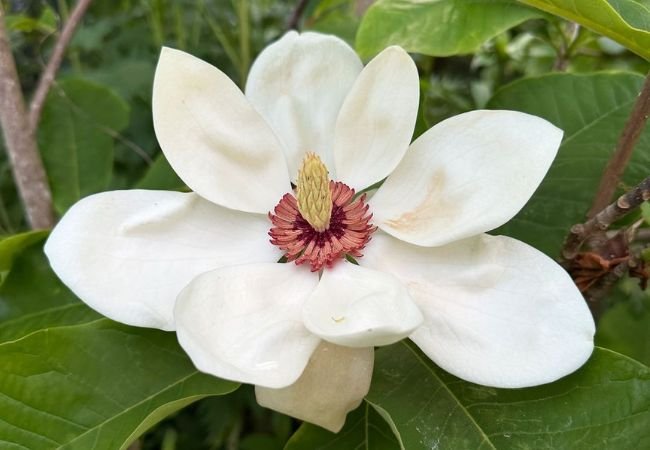Discover the timeless charm of Magnolia Flowers. Learn how to grow and care for these iconic trees that bring elegance, fragrance and a touch of the South to any landscape.
Have you ever seen a tree with huge, fragrant flowers that seem to appear before the leaves? That’s likely a Magnolia. These stunning trees have been gracing gardens and landscapes across the USA for centuries, especially in the South. Let’s explore why Magnolias might be the perfect addition to your outdoor space.
Here’s a detailed chart for Magnolia flowers:
| Category | Information |
|---|---|
| Botanical name | Magnolia spp. |
| Common name | Magnolia |
| Plant type | Deciduous or evergreen tree/shrub |
| Hardiness zone | Zones 4-9 (varies by species) |
| Sun exposure | Full sun to part shade |
| Soil type | Well-drained, slightly acidic soil |
| Watering | Regular watering, keep soil moist |
| Growth habit | Upright, spreading |
| Height/Spread | 10-80 feet tall, 10-50 feet wide (varies by species) |
| Special features | Large, fragrant flowers, attractive foliage, some species have evergreen leaves |
What are Magnolias?

Magnolias are flowering trees or shrubs known for their large, showy flowers. While many species are native to East Asia, several are native to the Americas, including the iconic Southern Magnolia.
Key Features
- Large, fragrant flowers, often white or pink
- Glossy, evergreen or deciduous leaves
- Some species bloom in early spring before leaves appear
- Can be evergreen or deciduous depending on the species
Why Gardeners Love Magnolias
- Spectacular Blooms Magnolia flowers are large and showy, creating a stunning display.
- Fragrance Many Magnolia species have strongly scented flowers.
- Year-round Interest Evergreen species provide beauty even in winter.
- Historical Significance Magnolias are deeply tied to Southern U.S. culture and history.
How to Grow Magnolias
Planting:
- Choose a spot with full sun to partial shade
- Plant in spring or fall
- Space trees according to their mature size (can be 20-80 feet depending on species)
- Prefer well-draining, slightly acidic soil
Care Tips:
- Water deeply and regularly, especially during the first growing season
- Mulch to retain moisture and suppress weeds
- Prune minimally, only to remove dead or crossing branches
- Fertilize sparingly; over-fertilizing can reduce blooming
For more detailed growing instructions, check out this guide from the Clemson Cooperative Extension.
Uses for Magnolias
- Landscape Focal Point A mature Magnolia can be a stunning centerpiece in a landscape.
- Shade Tree Some larger species provide excellent shade.
- Privacy Screen Evergreen Magnolias can create natural privacy barriers.
- Cut Flowers Magnolia blooms make dramatic cut flowers for large arrangements.
Interesting Facts About Magnolias
- Ancient Plants Magnolias are considered one of the earliest flowering plants, evolving before bees.
- State Flower The Magnolia is the state flower of both Mississippi and Louisiana.
- Diverse Family There are over 200 species of Magnolia, with a wide range of sizes and characteristics.
For more information on state flowers and trees, visit the USDA National Agricultural Library.
Types of Magno
but some popular ones for gardens include:
- Southern Magnolia (Magnolia grandiflora) The classic evergreen Magnolia with large, fragrant white flowers.
- Saucer Magnolia (Magnolia x soulangeana) Known for its large, pink to purple flowers that bloom in early spring.
- Star Magnolia (Magnolia stellata) A smaller species with star-shaped white flowers.
Potential Challenges
While Magnolias are generally hardy, be aware of these potential issues:
- Space Requirements Many Magnolias grow quite large. Ensure you have enough space for the mature tree.
- Leaf Litter Evergreen Magnolias drop leaves year-round, which can require regular clean-up.
- Slow Growth Magnolias often grow slowly, so patience is required.
For more information on tree care, visit the U.S. Forest Service’s Urban Tree Care page.
Magnolias are majestic trees that can add beauty, fragrance and a touch of Southern charm to any landscape. Their stunning flowers, historical significance and ability to provide year-round interest make them a valuable addition to many gardens.
Remember, successful gardening is about choosing plants that suit your local climate and personal preferences. With their wide range of species and adaptability, Magnolias can be a great choice for many gardeners across the USA, especially in the South and Southeast.
As you plan your landscape, consider adding a Magnolia for its spectacular blooms and enduring elegance. Whether you’re looking to create a focal point in your yard, enjoy fragrant flowers, or simply add a touch of Southern grace to your garden, Magnolias offer something truly special. With proper care, you’ll be enjoying these magnificent trees for generations to come.
For more gardening tips and plant care guides, visit usagardenhub.com.


One thought on “Magnolias : Majestic Southern Beauties for Your Garden”